Ghosts Bring Ethereal Terror By Breaking The Rules

Horror games, and video games in general, are filled with dozens upon dozens of different types of frightening enemies. There’s almost always something that’s out for your blood. The most terrifying among them, though, are ghosts. The reason behind that is oddly mechanical—ghosts don’t tend to follow the rules. They often upend things players do to make themselves feel safe in games. They provide endless terror with their unpredictable behaviors and ability to do the unexpected.
Take a zombie game like any of the Resident Evil installments. A zombie is shuffling toward you, arms outstretched. It’s trying to sink its teeth into your neck. What do you usually do here? Back up, take aim, and shoot? Run around them because they’re too slow? Put your back against a wall to make sure nothing sneaks up on you? Use a knife to conserve ammo for later? You have plenty of options, and you’ll likely rely on a combination of them all to stay alive.
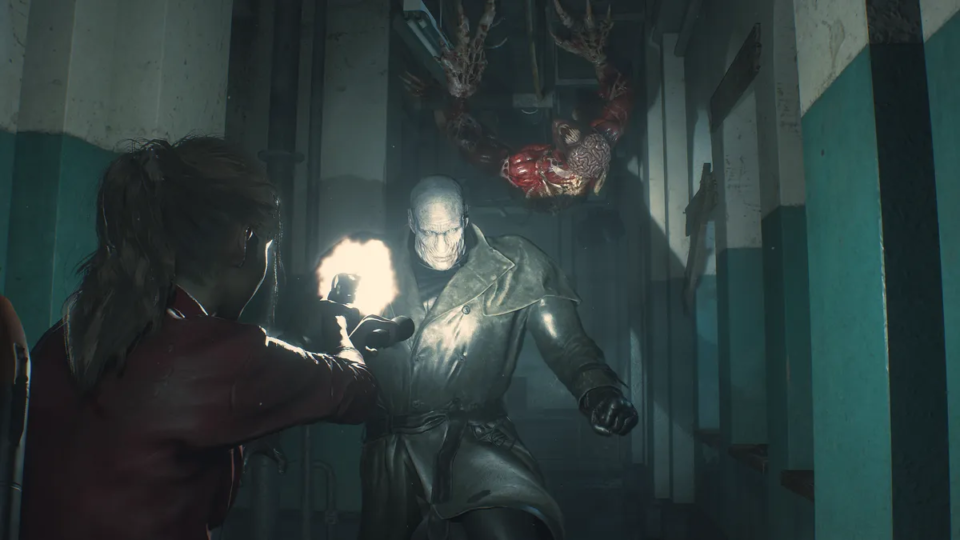
None of this is unique to Resident Evil. Gauging enemy speeds, using walls to control enemy movement, using the environment to give yourself some protection, and watching ammo counts or weapon usage speeds are all vital skills to beating just about any game with combat or danger. Even Kirby’s Dream Land pulls from these skills. Horror games just dial up the amount of danger and tension of these movements, bringing more fear into them.
But what happens when you compare this to something like Fatal Frame, though? In the Fatal Frame games, instead of well-armed special forces members, you’re a young woman with a camera (the Camera Obscura) that can exorcise ghosts. So, you’re armed with the ability to fight back, but you’ll quickly find a huge difference in fighting ghosts versus the generally rule-abiding zombies.
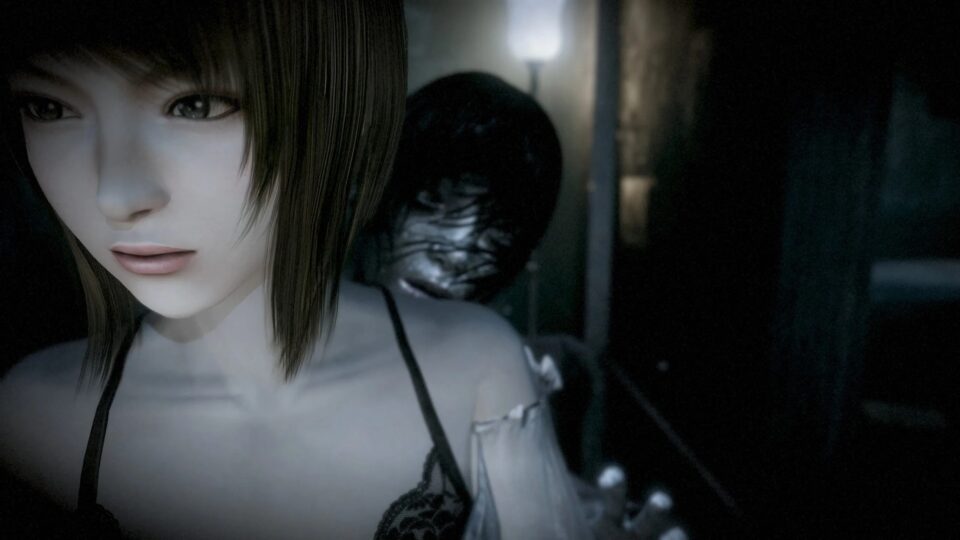
Predictability Goes Out The Door With Ghosts
While most game enemies move at predictable speeds, the ghosts in Fatal Frame don’t always have to. Many of them, even early on, can teleport to some extent. They may not move far, but most of them can fade in and out of view, appearing elsewhere. This makes it very hard to predict exactly what route they will take to reach you or how long it will take for them to get you. And, as knowing and planning based on enemy movement speed is such an integral part of playing games, it’s jarring and terrifying to have something teleporting around erratically, always getting closer.
Are you counting your shots to make sure you don’t run out of ammo? You can take careful aim in many video games to make your shots count. You can aim for the center of mass or watch enemy movements to predict where they’ll go so your shots typically land. You’ll miss periodically, but as you get to know your enemies, you get better at landing hits. But what if your enemy just disappears every once in a while with little reason? What if they do it often? When you have to keep track of your film in Fatal Frame just the same as you would your ammo in Resident Evil, what happens when your ammo dwindles because your enemy keeps disappearing?
And where do you hide when your enemy is teleporting around? What’s considered a safe place? You can’t back up into a hallway or try to keep your distance from an enemy like that because you don’t know how much distance will actually keep you safe. If you sneak into a narrow hallway, it’s not like the enemy has to eat a bunch of shots from you to reach you if it’s a teleporting ghost. It can just pop up close to you and strike you anyway. Plus, now YOU have to make your way down that hallway to get away.
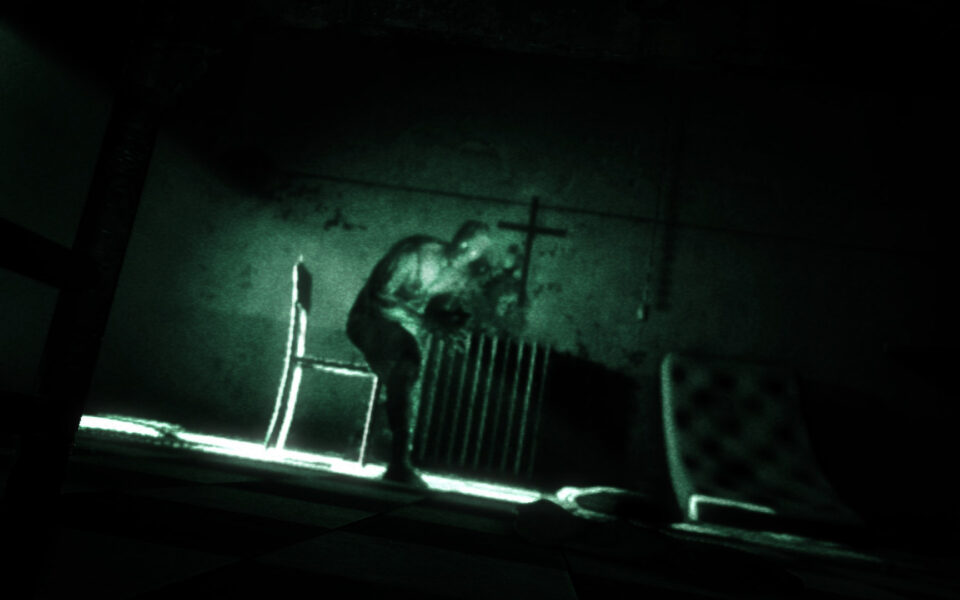
Environmental Blockers Won’t Slow A Ghost Down
That brings me to my next part about ghosts: their ability to travel through walls and objects. I have absolutely hosed so many otherwise terrifying horror games (and regular games) by running around a chair or a coffee table or something. This often forces the enemy that’s following you to decide how to best reach you, and then they need to work their way around whatever object that is between you and them. The most bone-chilling foes still typically need to carefully walk around clutter on the floor, something that tends to just demolish your sense of immersion. Outlast was extremely scary until I realized the enemies couldn’t hop over tables.
But what about Boos, our shy ghostly enemies in Super Mario World (and the various games beyond)? Wall in the way? It’s not their problem. A Boo will float through any object or barrier that’s between them and you. As long as you aren’t watching them, they will float through the shortest route to reach Mario. Admittedly, it’s scarier when ghosts are floating through the walls in Fatal Frame, but when you’re trying to do some complex jumps, and these relentless little guys are on your tail, you’re going to screw up. And since they can float through anything, you can’t use any tricky positionings to keep yourself safe. You just have to move or turn to face them (which tends to make your escape difficult).
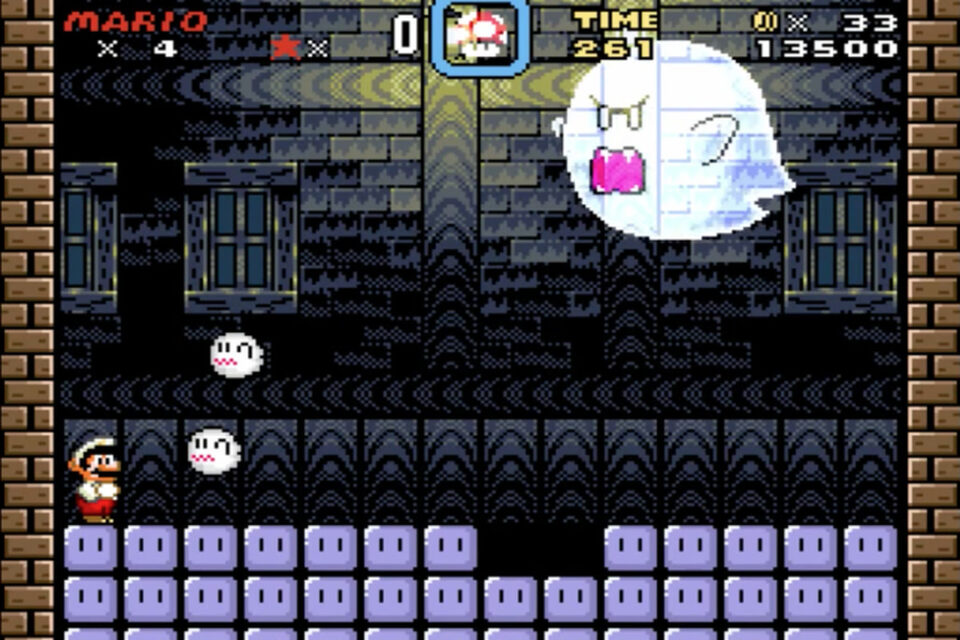
Possession Is Also A Real Fear (In Horror Games)
We often use walls for protection when we play games, too. If there’s a wall at our back, we can’t get attacked from that direction. Right? Barriers are a vital tool in games, and we all use them to varying degrees. Lisa, the gut-wrenchingly frightening ghost from P.T., doesn’t let that stop her from killing you. If it’s your time to die, you can’t block her from reaching you in a certain direction or position yourself in such a way that you see her coming. It sounds like a small thing, but having ghosts attack me from behind because I’m so used to backing against a wall to stay safe has made for some jarring scares. It’s so much worse when you don’t see your death coming.
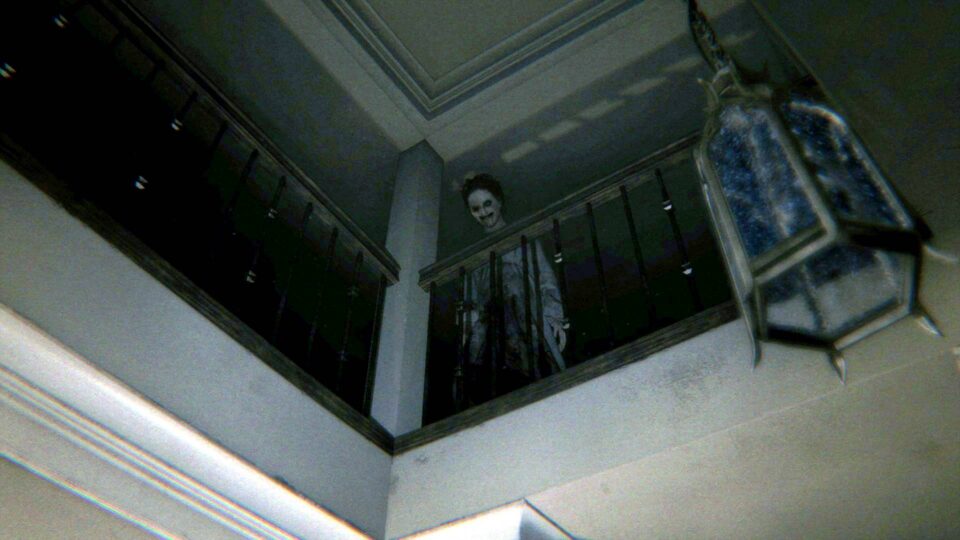
That predictability in your death is an odd comfort in games as well. Even if you’ve screwed up and that zombie gets too close, it’s not as frightening to die. When something gets you from behind, it’s even worse. What if they don’t even have to touch you, though? Echo Night: Beyond takes you to a haunted space station filled with spectral beings. Instead of giving you a health bar, you have to watch your heart rate. Contact with a ghost causes your heart rate to spike rapidly, and if it gets too high, you’ll die. So, while most games need an enemy to make contact with you, Echo Night: Beyond just requires that the enemies be somewhere nearby. You can die even if you’re out of the ghost’s reach.
In that situation, at least you know WHY you died, but P.T. denies you even that. Lisa doesn’t kill you predictably from stumbling into her. Instead, making contact with her puts you in a Possessed state, and once you’re in that state, she can then kill you. Taking too long or moving in a bad way while being Possessed gets you killed, but figuring out what behaviors will get you killed is a big part of playing P.T. So, you spend a whole lot of time not having any idea when you will die, or even what you did to make it happen. You likely won’t know it’s coming until you’re suddenly dead. You can’t even rely on knowing when you’ll die against this ghost.
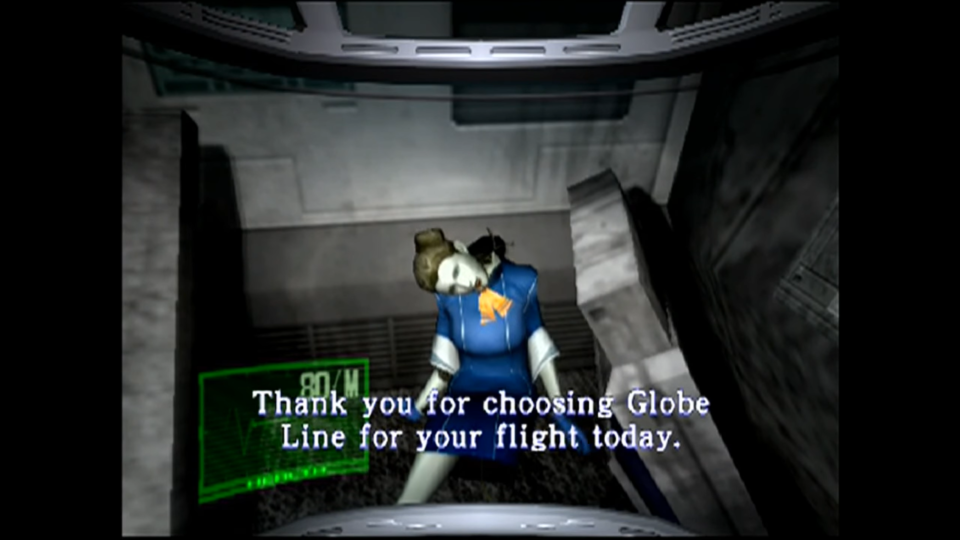
Knock Knock did something similar with its bizarre ghosts. In this game, you wander a surreal house every night, waiting for daybreak to come so that the ghosts leave you alone. However, you need to keep moving to avoid the hauntings during the night. These creatures are extremely unpredictable, often slamming you for heavy damage regardless of whether you’re hiding or out in the open. They’ve also harmlessly walked through me while I was in the middle of a room. Killed me while I was hidden. They all appear to operate under varied logic that I could never figure out, so every encounter was terrifying because I had no idea if I was going to die or not. Without that certainty of living or dying, you can’t help but quiver with fear.
Ethereal Mechanics Can Lead To Frustration When Done Wrong
Some ghosts will also kill you for what feels like no reason at all. Corpse Party, a fearful night where a bunch of schoolchildren are trapped in a terrifying school, sees the player dying for some innocuous reasons. In this game, if you look at a certain object at one point early in the game, you will trigger an unavoidable death later on. There are points where if you DON’T look at something, a character will die. And good luck figuring out what you did without a walkthrough or by paying very close attention to what’s going on. Here, the smallest, most innocent of actions can make you die. Most games at least let you know why you’re going to die. But here, you might never even know what you did that caused the fatal encounter.
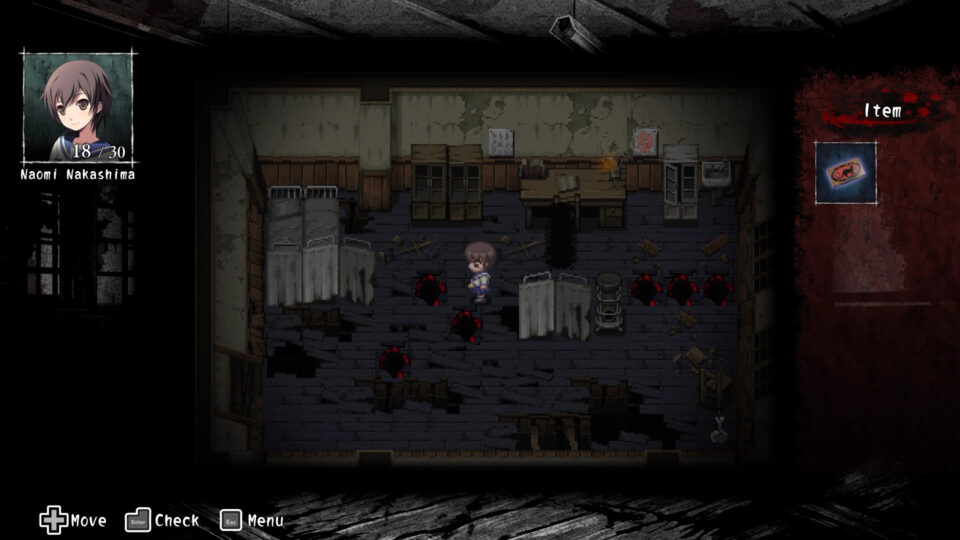
Each of these ghostly enemies breaks away from how games normally operate. You can usually use walls and halls to your advantage. You can track movements. Predict enemy attacks and attack directions. It’s possible to learn about your enemy and how it behaves. You can see it as long as you have a line of sight, as you will die from contact or hits. You will have some idea why you died. All of these are common rules that make games feel fair and that many of us almost take for granted in games. Even most horror games follow these rules. Even the unpredictable Alien from Alien: Isolation uses vents or ducts to get to the player, so you know what places to watch when it’s around.
Ghosts don’t have to follow any of these rules, and in doing so, they create something utterly terrifying in horror games. So many video game antagonists follow certain rules of the physical world or are bound by a kind of logic in how they strike or hurt the players. The ethereal, unknowable nature of ghosts makes them capable of doing just about anything and killing you in ways that feel scary in how unknowable they are. Almost anything can happen when ghosts are involved, and that easily makes them the most frightening creatures I’ve encountered in any game.
Categorized: Horror Gaming News
